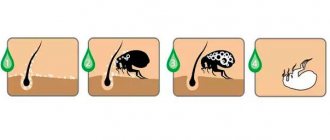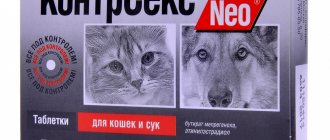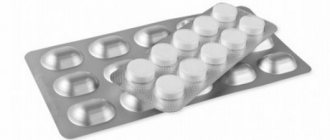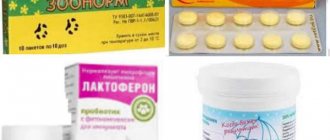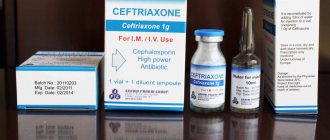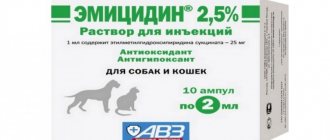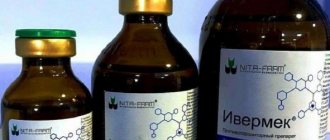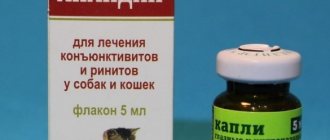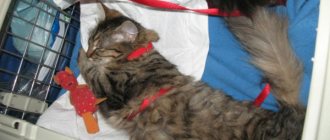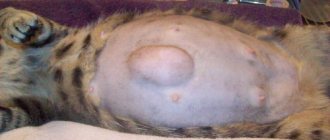Pet owners know that eye diseases in pets are not that uncommon. They cause many unpleasant moments not only for animals, but also for their owners. Sometimes kittens have watery eyes from birth, and this is very worrying for owners. How to help your pet? Is there a remedy that can save an animal from eye diseases? We will talk about this in the article.
Eye diseases: classification
Cats and dogs are susceptible to many eye diseases. The ability to identify them in time, provide first aid if necessary, and contact a specialist in a timely manner is the task of the owner of a cat or dog.
Experts divide this type of disease into:
- inflammatory;
- traumatic (or congenital pathologies).
The first group includes:
- conjunctivitis;
- keratoconjunctivitis;
- keratitis;
- inflammation of the nasolacrimal duct;
- iritis
In addition, eye diseases in our four-legged pets include problems with the orbit, canal and other tissues surrounding the eye - panophthalmitis, blepharitis and others.
The second group includes mechanical damage - bruises, foreign body, as well as entropion of the eyelid, glaucoma, cataracts, etc. Diseases can be classified according to their course - it can be chronic, subacute and acute.
In the chronic course of the disease, its symptoms do not disappear completely over time, but only fade a little. But it is precisely this fact that increases the risk of an animal losing vision or developing other health problems (especially in cases where the cause of the disease is an infection or virus).
Eye diseases in our four-legged pets are divided into primary and secondary. Primary are called changes in the eyes that are the underlying disease. Secondary are those ailments that arose in connection with a more serious health problem (an infectious disease, for example). In this case, it can be argued that conjunctivitis becomes one of the symptoms. And in order to completely cure an animal, you should fight the underlying disease, and not its clinical sign. Such a conclusion can only be given by a veterinarian, who should be contacted at the first signs of illness.
Indications for the use of eye drops
Eye diseases for which it is advisable to prescribe local symptomatic therapy with drops to a cat have a variety of etiologies:
- Inflammation of the mucous membrane of the eye (conjunctivitis) due to infection with a virus (calicivirus, infectious rhinotracheitis, feline herpes). The clinical picture of these diseases always includes eye damage, but the inflammation can be catarrhal (lacrimation and swelling of the eyelids), purulent (with copious discharge of exudate) or parenchymal (swelling of the eyelids, crusts, discharge).
- Allergic lacrimation, which develops during exposure to an allergen. It can be plant pollen, the pungent odor of a chemical substance (for example, deodorant, air freshener, household chemicals), a food component (most often chicken egg white), an insect bite in the muzzle area (bees, wasps), or the effect of a medicinal substance.
- Conjunctivitis, which develops when a foreign body gets into the eye (dust, sawdust, wool, insect larvae). Symptoms depend on the time of exposure and the size of the foreign agent (it begins with swelling of the eyelids, lacrimation, then secondary microflora is applied, the animal scratches the eye and purulent discharge appears).
- Bacterial inflammation (primary) due to close contact with a sick pet.
In veterinary practice, inflammatory processes of the eyes in cats have their own Latin names. Namely:
- Glaucoma is a disease in which intraocular pressure increases, the outflow of ocular fluid decreases, the optic nerve is damaged and blindness develops.
- Keratitis is clouding of the cornea with ulceration, scaling and invasion of blood vessels.
- Blepharitis is inflammation of the eyelids in a cat.
- Iridocyclitis is an inflammation of the iris and choroid of the eye.
These are the terms that are indicated in the instructions for veterinary eye products.
Tearing
This is mainly caused by the kitten's (or puppy's) immature immunity. In this regard, viruses enter his body, causing tears. In older animals, the cause may be an allergy, for example, to poplar fluff, perfumes, or household chemicals. Often watery eyes are a characteristic of a special breed of cat. More precisely, the property of some breeds is that they turn in the eyelids. In this case, tears appear due to microcracks that occur. But in such a situation, only surgical intervention will help.
In other cases, your four-legged pet can be helped by Diamond Eyes eye drops. This is a well-proven remedy that has a bactericidal, anti-edematous and anti-inflammatory effect.
“Diamond Eyes” are drops that penetrate well into all tissues of the eye and provide a stable and quick effect. All reviews about this drug are positive (both from animal owners and veterinarians), since there are practically no contraindications to its use, and side effects are rarely recorded. Veterinarians often prescribe this drug to their four-legged patients, considering it effective and safe for health.
“Diamond Eyes” are drops that can be purchased at any veterinary pharmacy or pet store. The price of the drug is quite affordable - a 10 ml bottle costs from 130 to 160 rubles.
Side effects
Veterinarians and dog owners note: upon first use and throughout the course of therapy, negative reactions of local and systemic action practically do not occur. It is important to adhere to the instructions, observe the duration of the course and the daily dose, taking into account the disease or preventive measures.
In rare cases, with individual sensitivity of the body, conjunctival hyperemia (redness of tissue) increases. If an allergic reaction develops, discontinue the ophthalmic drug Diamond Eyes and visit a veterinarian to select another drug.
No overdose symptoms were noted, however, veterinarians do not advise violating the requirements specified in the annotation for the drug Diamond Eyes.
Properties
Eye drops “Diamond Eyes” (for cats and dogs) have anti-inflammatory, anti-edematous and bactericidal effects. When introduced into the conjunctival cavity, the product easily penetrates into all tissues, thereby providing a therapeutic effect of the active components.
Chlorhexidine bigluconate has a bactericidal effect (quickly manifested) against gram-negative and gram-positive bacteria, lipophilic viruses and dermatophytes. It binds cations that are formed as a result of dissociation of chlorhexidine (salt) by cell walls, disruption of membrane function and osmotic balance of cells. This leads to a decrease in the level of cellular ATP and the destruction of the infection.
Taurine and succinic acid contribute to the restoration and normalization of tissues, have a reparative effect, slow down (and sometimes prevent) the development of cataracts and are a prophylactic against dystrophic and degenerative disorders in the lens and retina.
What analogues are there?
If a cat has contraindications to the drops, they are replaced with an analogue medicine. Most often, Alezan is prescribed, which has an identical composition: succinic acid, taurine and chlorhexidine digluconate. The product also has similar indications for use: daily eye treatment, elimination of accumulated exudate, prevention of cataracts and other pathologies of the visual organs in cats.
Replacement with drugs of similar effect should be carried out only after consultation with a veterinarian.
Doses and method of administration
“Diamond Eyes” drops (instructions included with each package) are indicated for daily eye cleaning, as well as for mild conjunctivitis. In this case, crusts and exudate are removed from the inner corner of the eye using a gauze (sterile) swab moistened with the drug. Then “Diamond Eyes” is instilled into the animal. For cats and dogs weighing up to ten kilograms, 1 drop is enough, for dogs weighing more than ten kilograms - 2 drops. The procedure is repeated from one to three times a day.
- For 45 days, the drug can be used when treated once a day. Then you should take a break for ten days.
- 20 days “Diamond Eyes” can be used when treating an animal twice a day. After this, you need to take a break for seven days.
- For no more than 14 days, the drug is used for treatment three times a day. Then you need to interrupt treatment for five days.
For excessive lacrimation, injuries, red eye syndrome, contact with irritating substances or foreign objects, the drug is used two drops three times a day for five to fourteen days. “Diamond Eyes” is recommended for the prevention of cataracts, as well as degenerative age-related changes in the cornea and retina.
The drug is used in courses of twenty days. Dosage - no more than two drops, with a mandatory ten-day interval.
Indications and contraindications
The medication is recommended for use in the following clinical cases:
- excessive lacrimation in the animal;
- inflammatory processes in the mucous membranes of the eyes;
- hyperemia;
- allergic conjunctivitis;
- blepharitis, keratitis, trichiasis;
- presence of a foreign body in the eye;
- eye injuries;
- treatment of acute and chronic viral and infectious eye diseases.
Depending on the characteristics of the pathology, drops are used for excessive lacrimation, to relieve swelling and redness, and to eliminate allergic reactions that are accompanied by the accumulation of exudate. If an animal often collects tears in the corners of its eyes, the drug is recommended for daily use for hygienic treatment of the organ of vision.
If a kitten, due to the characteristics of the breed, is prone to eye diseases, drops are recommended to be used as a preventive measure. Medicine is prescribed after surgery to prevent infections. The medicine is safe and can be used by pregnant and lactating cats.
The only contraindication is individual intolerance to individual components in the composition.
Manufacturer
“Diamond Eyes” is manufactured by the Russian company AVZ, known to animal lovers. For many years, it has been developing and producing medicines for farm poultry and animals.
"Agrovetzashchita" produces more than three hundred types of medicinal products in fifteen forms - granules and tablets, oil and aqueous solutions, suspensions and injection preparations, gels and sprays, eye drops, shampoos and ointments, balms, etc. All these various products are manufactured at based on advanced technologies on modern equipment. All Agrovetzaschita products are certified and registered in Russia and neighboring countries.
The company has its own research and development center. The company’s department for the development and research of new drugs employs five professors and doctors of science, sixteen candidates of science. the world famous cats of the Hermitage.
For what pathologies is the drug used?
So, the article talks about the “Diamond Eyes” product (drops). Instructions, indications and contraindications will be discussed in detail.
This drug is used for the treatment and prevention of eye pathologies. Among the diseases for the treatment of which veterinarians recommend drops are the following:
- Inflammation of the mucous membrane of the eyes caused by various reasons.
- Inflammatory diseases of the eyelids.
- Pathologies of the cornea.
- Cataracts.
- Inflammation of the eyes after injuries (ingress of foreign objects, chemical burns).
- Allergies.
- Copious clear discharge from the eyes (this may be caused by the breed). Such phenomena often occur, for example, in brachycephalic cats of Scottish breeds.
- Dystrophy of the lens and cornea, often occurring in older animals.
Also, for eye injuries (burns, foreign objects entering the mucous membrane), this drug can be used (but only after removing foreign bodies or chemicals), as it has an anti-inflammatory effect.
Reviews about the drug
If we consider the opinions of animal owners who have used this remedy to treat their pets, we can conclude that in general people are satisfied with the effectiveness of the drops. Many note such advantages of the drug as rapid action, good tolerability, noticeable external signs of improvement in the animal’s well-being (swelling subsides a short time after the start of therapy, itching, a white film on the eyes and increased tearfulness disappear). If we talk about the negative characteristics of the drug "Diamond Eyes", reviews reflect such shortcomings as the ineffectiveness of the drug in severe pathologies (for example, with advanced purulent infections, when the drug acts only in combination with stronger drops and ointments), as well as a small number of drops in packaging (because of this they are used up quickly). Also, some buyers are dissatisfied with the high price of the drug (considering its small volume).

